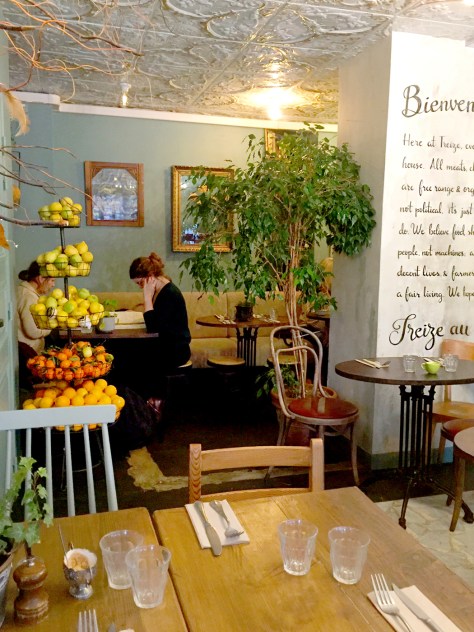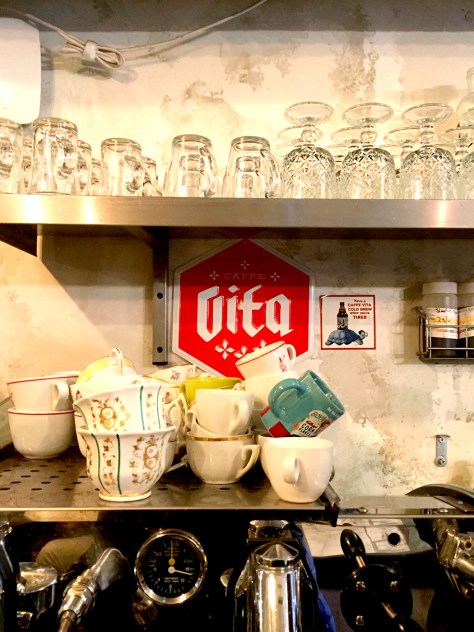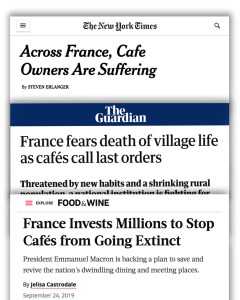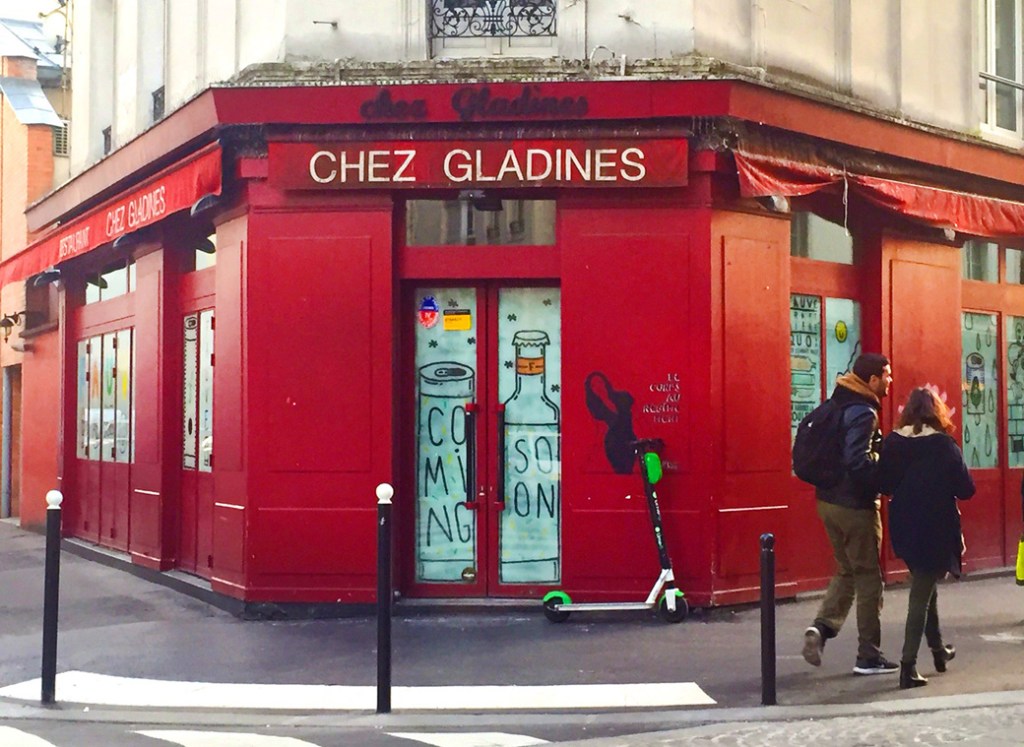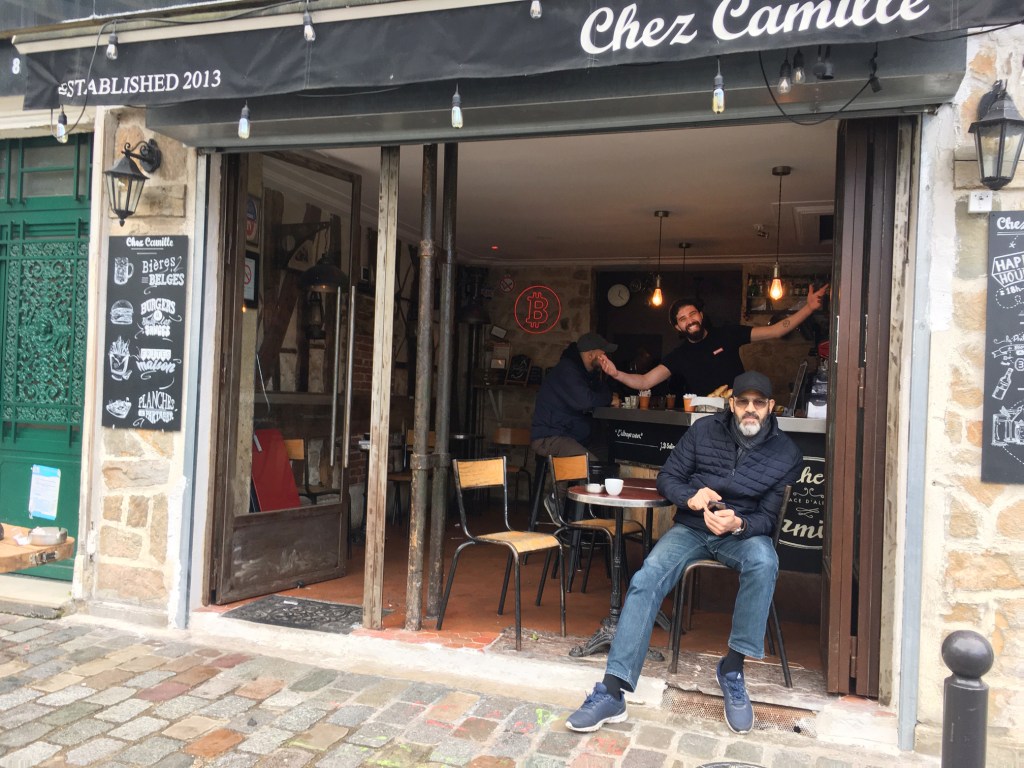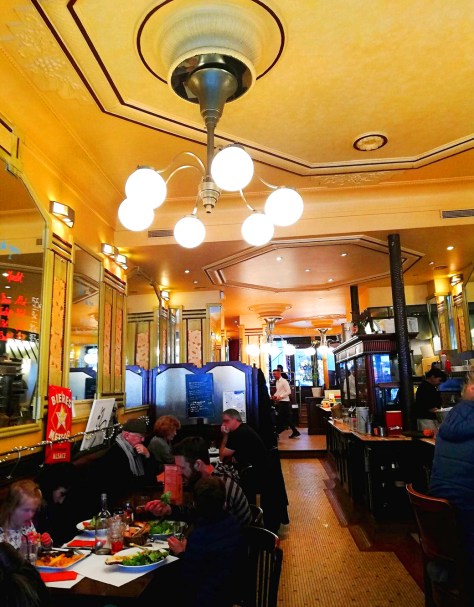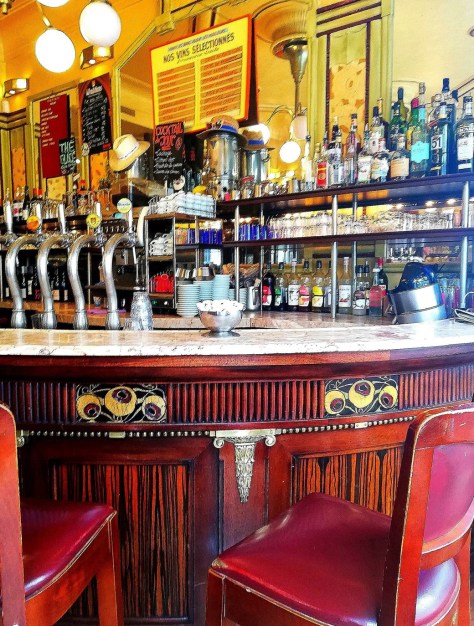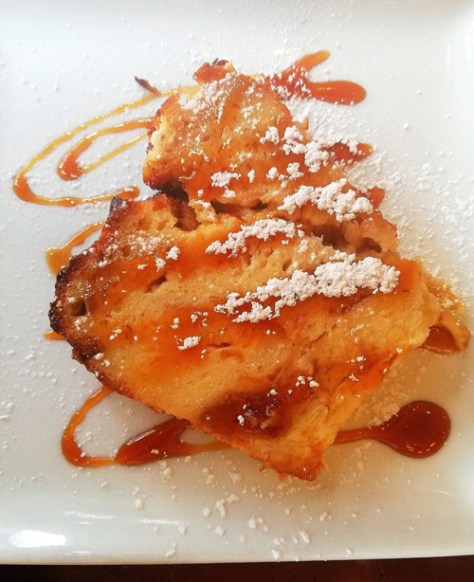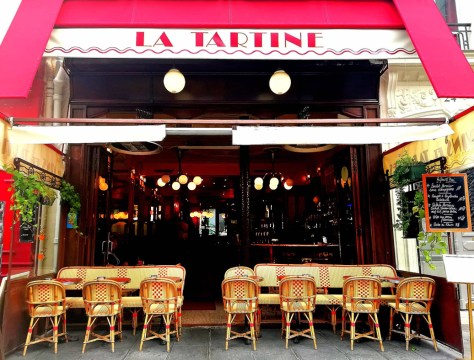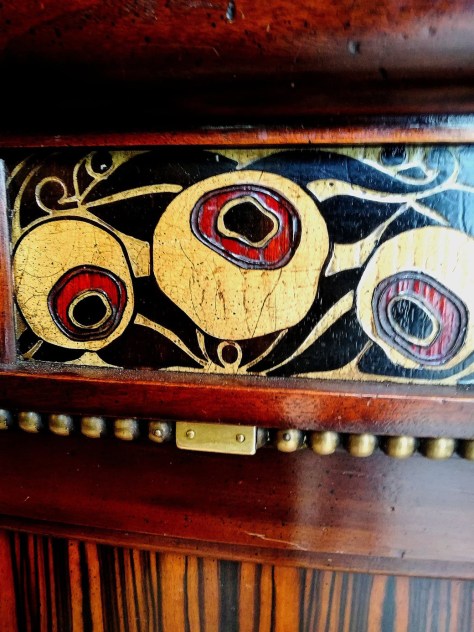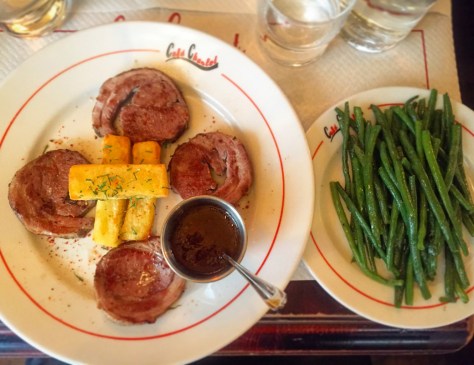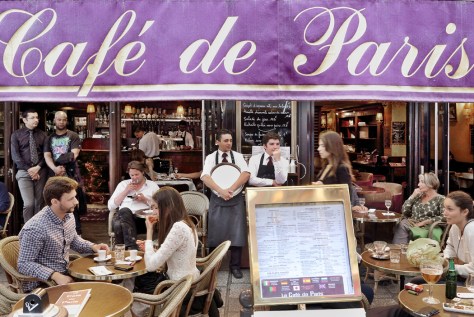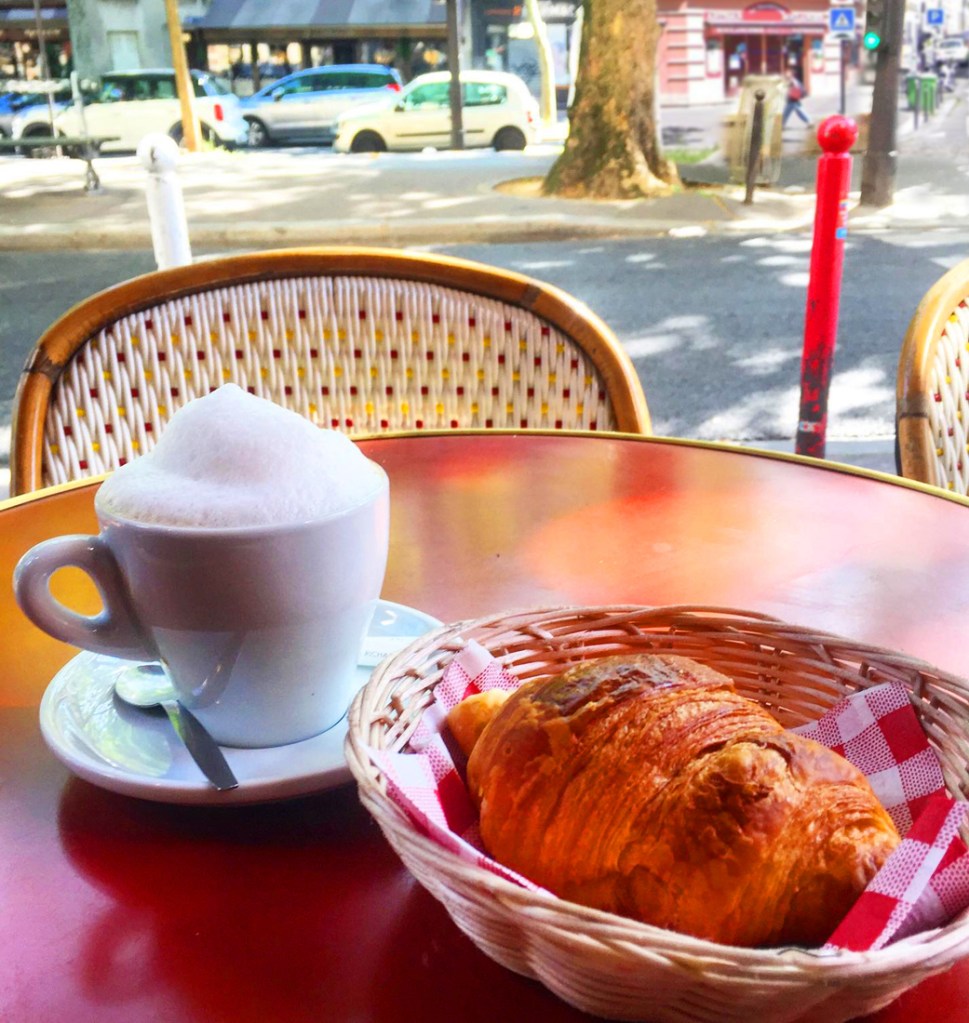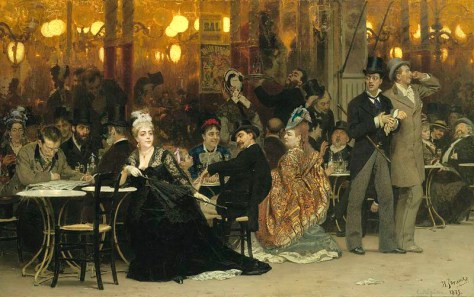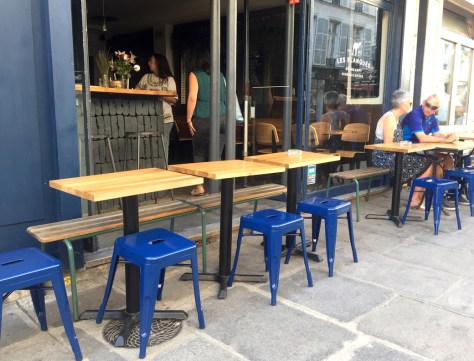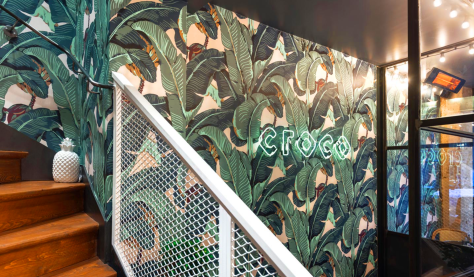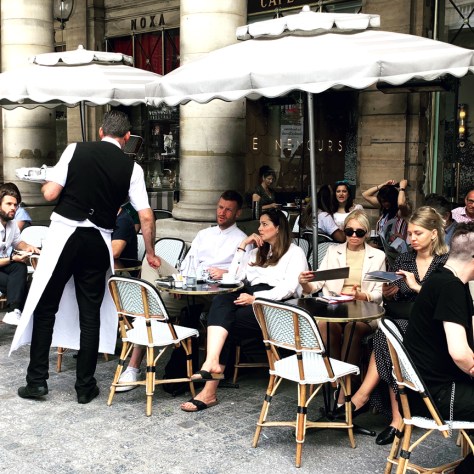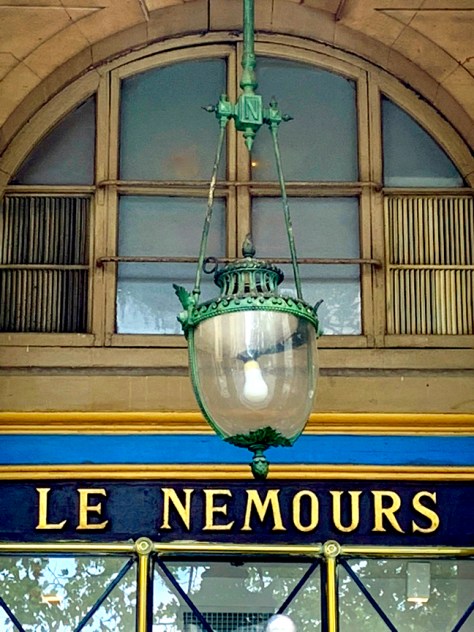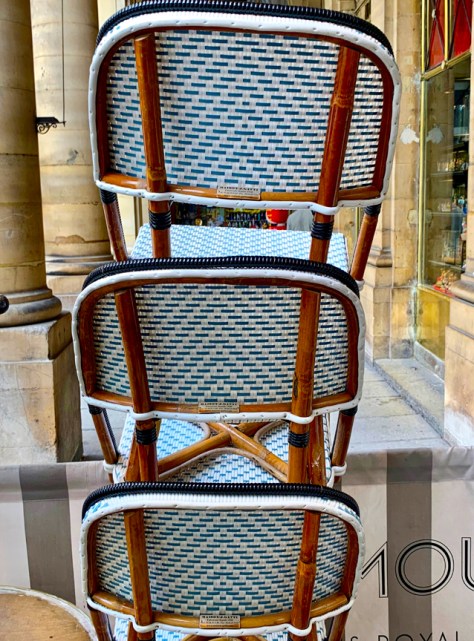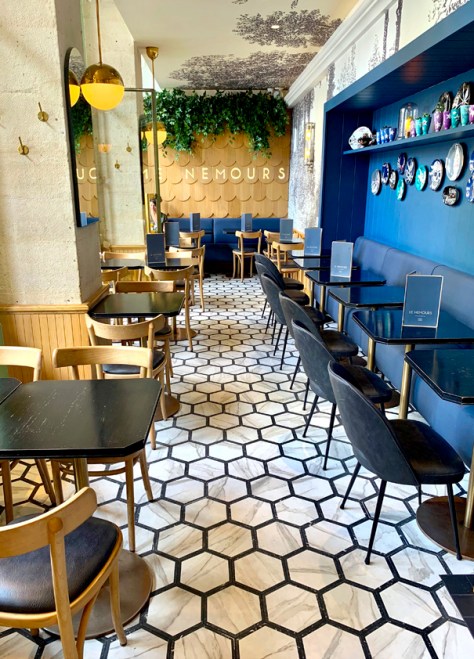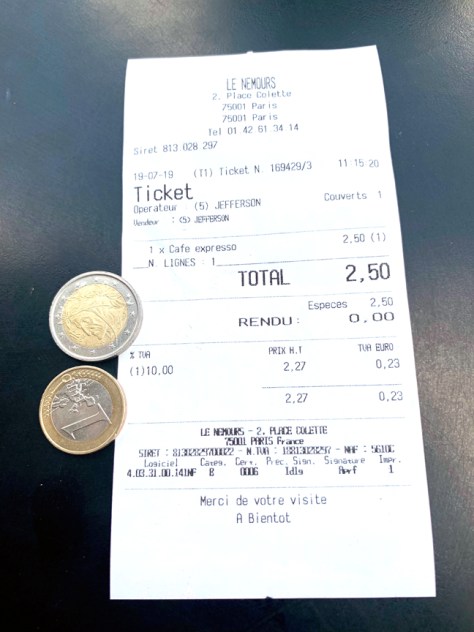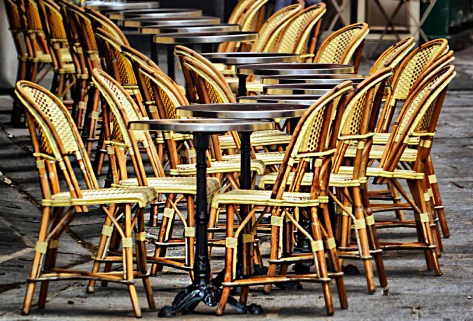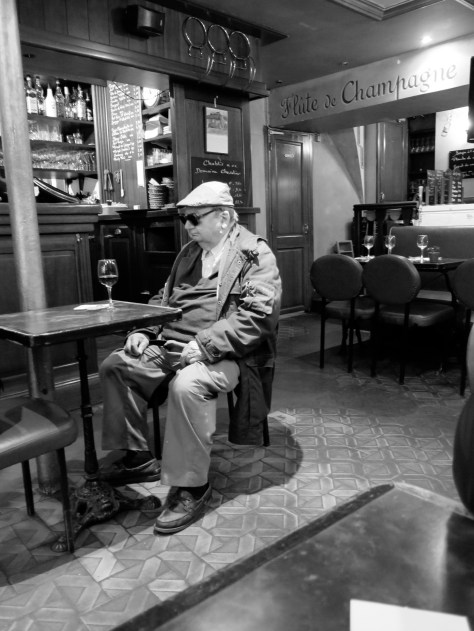by Cori Coppola
[Trouvez ci-dessous la version française]
The summer of 1982 was the beginning of a lifelong love affair with the city that would eventually become my home. Truth be told, it was love at first sight. On one of my many long walks through Paris, at the tender age of nine, I made a wish in my heart that one day I would be reunited with my true love. Sometimes wishes do come true, and as a young adult I did return for a couple of years, but it wasn’t until my late twenties that desire and fate bonded together to open the way for my dream to come true.
No matter how long I live here, I still find childhood ghosts around almost every corner. Originally, I had been brought over to be a summer companion and playmate for a little French girl who was about my age. But I loved my time in France so much, that by the end of the summer I couldn’t bear to leave. I begged my mother and big sister to let me stay. I was allowed to stay and enroll in the international class of a public school in the 6th arrondissement.

At that time, schools had Wednesday off and a half day of school on Saturday morning. While I wasn’t thrilled at the prospect of getting up early on the weekend to go to school, I did love the freedom that came along with it. Because everyone was busy on the weekend, I was allowed to roam free after school. And I almost always did the same thing. I would wander the city streets, together with my friend from school, Dédé. We almost always ended up on the Île Saint-Louis, where we would stop and buy a Coke with a little something to nibble on at one of the cafés. Afterwards, we would take our time strolling over to the Centre Pompidou—to this day, still my favorite museum in the city.
The Île Saint-Louis has always been one of the most romantic and charming spots to capture the quaint feel of old Paris, with used-book sellers, and lovers rapt in one another’s gaze sitting along the embankment. From nearly all the cafés on the île, one always has spectacular views, but perhaps my favorite place was l’Escale, a timeless little brasserie sitting on the corner of Rue des Deux Ponts, with a view directly over the Pont de la Tournelle facing the Tour d’Argent, a famously expensive restaurant that specializes in serving duck.

L’Escale has been around for more than sixty years or so, and is currently owned by the Tardieu family, who bought it in 1989. Portraits cover the walls of the little café and take one back to a Paris gone by. And although this cafe may not be the most picturesque, or the one most likely to conjure the literary memories of Hemingway like Café de Flore and La Palette, l’Escale still evokes a feeling of home for me. A few red booths run along the back, while small tables for two sit before floor-length windows, and against a wall lined with mirrors, giving the illusion of a larger space. In the center of the small space is the gold-rimmed bar, where from my childhood I recall men smoking and taking an espresso or a glass of wine, while chattering away to one another. Dédé and I would sit at one of the smaller tables drinking Cokes while gossiping and discussing our plans for the remaining weekend. Just two American girls growing up in Paris, mini-flâneures—both from California, where one would be always packed up in the back of a car or station wagon, only to look out a window for endless hours at freeways—who both loved the adventure and freedom of being on foot and on our own.
There is a sign to let you know that there is no WiFi and to suggest that you actually talk with the person in front of you.

The current owners were unable to tell me much about the restaurant, other than it had previously been owned by another family who had bought it from someone else in 1970. The interior certainly looks to have been given a facelift during that time. There are few architectural elements to properly date it, hanging lights that hover over the bar and a traditional black chalkboard that lists each day’s offerings. There is also a sign in French to let you know that there is no WiFi and to suggest that you instead enjoy your meal while actually talking with the person in front of you. I have found this same type of sign in several Parisian cafés, who rightly believe that one should appreciate both one’s meal and one’s companions rather than spending time FaceTiming and surfing the web on the phone, ignoring any and all live company and entertainment.
I wish I had more of a history about the restaurant itself, but the friendly staff, who only speak French, did not have much to say. There is no website with glorious tales of who had eaten there or sat at the bar, and no glory by association except perhaps from those of us who have had the pleasure of sitting for an hour or two and just lazily watching the boats pass under the bridge and up at the sky above, a place to dream over your café au lait.
L’Escale serves a traditional brasserie menu, omelettes, salads, and other traditional French cuisine, and they have an excellent selection of wines.
L’Escale, 1 Rue de Deux Ponts, 4ème
Tel: +33 1 43 54 94 23
Métro: Pont Marie or Sully-Morland (line 7)
CORI COPPOLA is the producer of the documentary The House of Cardin, directed by P. David Ebersole and Todd Hughes. She has worked as a coordinator and VFX producer for films and commercials both in the U.S. and in France, and is the official English-language biographer of the Japanese fashion designer Yumi Katsura. Ms. Coppola, who originally hails from Hollywood has lived in Paris for over 19 years. She is the granddaughter of famed opera conductor Anton Coppola, and part of the celebrated Coppola family. Her passion for art, fashion, and film continues to inspire and drive her work.
SIGN UP FOR OUR NEWSLETTER and get the latest articles, news, and more. (Sign-up in the left-hand menu bar on desktop, or at the bottom of the page on mobile.)
VERSION FRANÇAISE

L’été 1982 a été le début d’une histoire d’amour avec la ville qui allait devenir ma maison. À vrai dire, c’était le coup de foudre. Lors d’une de mes nombreuses longues promenades à travers Paris, à l’âge tendre de neuf ans, j’ai fait un vœu dans mon cœur qu’un jour je serais réuni avec mon véritable amour. Parfois, les souhaits se réalisent, et en tant que jeune adulte, je suis revenu pendant quelques années, mais ce n’est que vers la fin de la vingtaine que le désir et le destin se sont liés pour ouvrir la voie à la réalisation de mon rêve.
Peu importe combien de temps je vis ici, je trouve toujours des fantômes d’enfance dans presque tous les coins. À l’origine, j’avais été amené à être un compagnon d’été et un compagnon de jeu pour une petite fille française qui avait à peu près mon âge. Mais j’aimais tellement mon séjour en France qu’à la fin de l’été, je ne pouvais plus supporter de partir. J’ai supplié ma mère et ma grande sœur de me laisser rester. J’ai été autorisée à rester et à m’inscrire dans la classe internationale d’une école publique du 6e arrondissement.
À cette époque, les écoles avaient un mercredi de congé et une demi-journée d’école le samedi matin. Bien que je n’étais pas ravie à l’idée de me lever tôt le week-end pour aller à l’école, j’aimais la liberté qui l’accompagnait. Parce que tout le monde était occupé le week-end, j’ai été autorisé à me promener librement après l’école. Et j’ai presque toujours fait la même chose. Je déambulais dans les rues de la ville avec mon ami de l’école, Dédé. Nous nous retrouvions presque toujours sur Île Saint-Louis, où nous nous arrêtions et achetions un coca avec un petit quelque chose à grignoter dans l’un des petits cafés. Ensuite, nous prenions notre temps pour nous promener au Centre Pompidou—à ce jour, toujours mon musée préféré de la ville.

L’Île Saint-Louis a toujours été l’un des endroits les plus romantiques et les plus charmants pour capturer l’atmosphère pittoresque du vieux Paris, avec des vendeurs de livres d’occasion et des amoureux ravis dans le regard de l’autre assis le long des quais inférieurs. De presque tous les cafés de l’île, on a toujours eu des vues spectaculaires, mais mon endroit préféré était peut-être l’Escale, une petite brasserie intemporelle située au coin de la rue des Deux Ponts, avec une vue directement sur le Pont de la Tournelle qui est en face la Tour d’Argent, un restaurant réputé cher spécialisé dans le service du canard.
L’Escale existe depuis plus de soixante ans environ et appartient actuellement à la famille Tardieu, qui l’a achetée en 1989. Des portraits recouvrent les murs du petit café et en ramènent un dans un Paris révolu. Et bien que ce café ne soit pas le plus pittoresque ou le plus susceptible d’évoquer les souvenirs littéraires d’Hemingway comme le font Café de Flore et La Palette, l’Escale évoque toujours un sentiment de chez moi. Quelques petites cabines rouges courent le long du dos, tandis que de petites tables pour deux sont assises devant des fenêtres au sol et contre un mur garni de miroirs, donnant l’illusion d’un espace plus grand. Au centre du petit espace se trouve le bar bordé d’or, où depuis mon enfance je me souviens d’hommes qui fumaient et prenaient un expresso ou un verre de vin, tout en bavardant. Dédé et moi nous asseyions à l’une des plus petites tables pour boire du coca tout en bavardant et en discutant de nos plans pour le week-end restant. Juste deux filles américaines qui grandissaient à Paris, des mini-flâneures —toutes deux de Californie, où l’une était toujours emballée à l’arrière d’une voiture ou d’un break, seulement pour regarder par la fenêtre pendant des heures sans fin sur les autoroutes—qui aimaient toutes les deux l’aventure et la liberté d’être à pied et seul.
De presque tous les cafés de l’île, on a toujours eu des vues spectaculaires, mais mon endroit préféré était peut-être l’Escale

Les propriétaires actuels n’ont pas pu m’en dire plus sur le restaurant, à part qu’il appartenait auparavant à une autre famille qui l’avait acheté à quelqu’un d’autre en 1970. L’intérieur semble certainement avoir subi un lifting pendant cette période. Il y a peu d’éléments architecturaux pour la dater correctement, des lampes suspendues qui planent au-dessus du bar et un tableau noir traditionnel qui répertorie les offres de chaque jour. Il y a aussi un panneau en français pour vous informer qu’il n’y a pas de WiFi et pour vous suggérer de profiter plutôt de votre repas tout en discutant avec la personne devant vous. J’ai trouvé ce même type de signe dans plusieurs cafés parisiens, qui croient à juste titre que l’on devrait apprécier à la fois son repas et ses compagnons plutôt que de passer du temps sur FaceTiming et de surfer sur le Web par téléphone et d’ignorer toute compagnie et divertissement en direct.

J’aimerais avoir plus d’histoire sur le restaurant lui-même, mais le personnel amical, qui ne parle que français, n’avait pas grand-chose à dire. Il n’y a pas de site Web avec des histoires glorieuses sur ceux qui y ont mangé ou qui se sont assis au bar, et aucune gloire par association, sauf peut-être de ceux d’entre nous qui ont eu le plaisir de s’asseoir pendant une heure ou deux et de regarder paresseusement les bateaux passer sous le pont et au-dessus du ciel, un endroit pour rêver au-dessus de votre café au lait.
L’Escale propose un menu traditionnel de brasserie d’omelettes, de salades et d’autres plats traditionnels français, et ils ont également une excellente sélection de vins.
L’Escale, 1 Rue de Deux Ponts, 4ème
Tel: +33 1 43 54 94 23
Métro: Pont Marie ou Sully-Morland (ligne 7)
CORI COPPOLA is the producer of the documentary The House of Cardin, directed by P. David Ebersole and Todd Hughes. She has worked as a coordinator and VFX producer for films and commercials both in the U.S. and in France, and is the official English-language biographer of the Japanese fashion designer Yumi Katsura. Ms. Coppola, who originally hails from Hollywood has lived in Paris for over 19 years. She is the granddaughter of famed opera conductor Anton Coppola, and part of the celebrated Coppola family. Her passion for art, fashion, and film continues to inspire and drive her work.
Abonnez- vous!
Soyez informé des dernières nouveautés.




